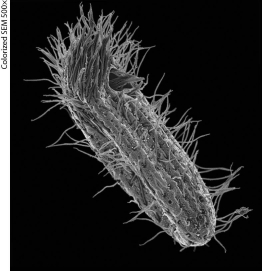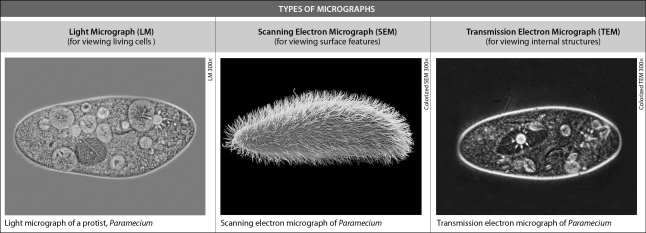A) cell theory
B) Hooke's rule
C) evolutionary theory
D) Mendel's law
Correct Answer

verified
Correct Answer
verified
Multiple Choice
The endomembrane system includes ______.
A) ribosomes, lysosomes, vacuoles, and the endoplasmic reticulum
B) Golgi apparatus, ribosomes, vacuoles, and the endoplasmic reticulum
C) Golgi apparatus, lysosomes, ribosomes, and the endoplasmic reticulum
D) Golgi apparatus, lysosomes, vacuoles, and the endoplasmic reticulum
Correct Answer

verified
Correct Answer
verified
Multiple Choice
Most human cells contain ______ chromosomes.
A) 36
B) 46
C) 2
D) 23
Correct Answer

verified
Correct Answer
verified
Multiple Choice
A hormone that will be secreted from the cell is manufactured by ribosomes _____.
A) attached to the endoplasmic reticulum
B) attached to the Golgi apparatus
C) attached to the plasma membrane
D) inside the nucleus
Correct Answer

verified
Correct Answer
verified
Multiple Choice
Cellular respiration can be described as the conversion of the energy ______.
A) of sunlight to energy stored in organic compounds
B) stored in food molecules to energy stored in ATP
C) stored in ATP to energy stored in food molecules
D) stored in ATP to energy used to do work
Correct Answer

verified
Correct Answer
verified
Multiple Choice
Where does protein synthesis take place?
A) in the nucleolus
B) on smooth endoplasmic reticulum
C) on ribosomes
D) in the nucleus
Correct Answer

verified
Correct Answer
verified
Multiple Choice
You find a cell of a type you have never seen before.The cell has both a nucleus and a cell wall.Therefore,you conclude that it must be a ______ cell.
A) prokaryotic
B) animal
C) bacterial
D) plant
Correct Answer

verified
Correct Answer
verified
Multiple Choice
Which of the following is a function of the Golgi apparatus?
A) digestion of organic matter inside the cell
B) protein modification
C) drug detoxification
D) protein synthesis
Correct Answer

verified
Correct Answer
verified
Multiple Choice
In plant cells,______ may contain organic nutrients,pigments,and poisons.
A) mitochondria
B) chloroplasts
C) lysosomes
D) central vacuoles
Correct Answer

verified
Correct Answer
verified
Multiple Choice
The figure below shows a Paramecium,a single-celled freshwater protist.The hairlike structures visible on the Paramecium allow it to move.These structures are ______. 
A) microfilaments
B) intermediate filaments
C) flagella
D) cilia
Correct Answer

verified
Correct Answer
verified
Multiple Choice
What structures move proteins from the ER to the Golgi apparatus?
A) transport proteins
B) central vacuole
C) transport vesicles
D) nucleolus
Correct Answer

verified
Correct Answer
verified
Multiple Choice
Information is transferred from the nucleus to ribosomes via ______.
A) mRNA
B) rough endoplasmic reticulum
C) DNA
D) smooth endoplasmic reticulum
Correct Answer

verified
A
Correct Answer
verified
Multiple Choice
Microtubules are associated with ______.
A) cilia
B) flagella
C) cell shape
D) all of the above
Correct Answer

verified
Correct Answer
verified
Multiple Choice
In eukaryotic cells,what name is given to the region between the nucleus and the plasma membrane?
A) cytoplasm
B) phospholipid bilayer
C) nucleoid
D) chloroplast
Correct Answer

verified
Correct Answer
verified
Multiple Choice
When mixed with water,phospholipids spontaneously form membranes because they ______.
A) have hydrophilic phosphate groups that are attracted to water and hydrophobic fatty acid tails that avoid water
B) have hydrophilic fatty acid tails that are attracted to water and hydrophobic phosphate groups that avoid water
C) have hydrophilic heads that are attracted to their hydrophobic tails
D) are both fluid and mosaic
Correct Answer

verified
Correct Answer
verified
Multiple Choice
Read the following scenario to answer the following question(s) . The earliest cells detectable in fossils were different from the cells in animals, plants, fungi, and protists living today. These first prokaryotic cells gave rise to eukaryotic cells approximately 1.7 billion years ago. The structure of eukaryotic cells today suggests how they might have evolved from their prokaryotic ancestors. Scientists examining mitochondria and chloroplasts now think that these organelles were probably free-living prokaryotes before becoming a part of eukaryotic cells long ago. -What evidence suggests that mitochondria might have evolved before chloroplasts?
A) Mitochondria can sometimes divide to produce chloroplasts.
B) Only mitochondria have their own DNA.
C) Some mitochondria have chloroplasts inside of them.
D) Almost all eukaryotes have mitochondria but only some cells have chloroplasts.
Correct Answer

verified
Correct Answer
verified
Multiple Choice
Examine the following photographs.Which of the techniques reveal internal cellular detail? 
A) light micrograph and transmission electron micrograph
B) light micrograph and scanning electron micrograph
C) transmission electron micrograph and scanning electron micrograph
D) all three micrographs
Correct Answer

verified
Correct Answer
verified
Multiple Choice
The structural combination of DNA and protein forms ______.
A) nucleoli
B) nucleoplasm
C) chromatin
D) ribosomes
Correct Answer

verified
C
Correct Answer
verified
Multiple Choice
______ are the major lipids of plasma membranes.
A) Steroids
B) Fatty acids
C) Mosaics
D) Phospholipids
Correct Answer

verified
Correct Answer
verified
Multiple Choice
Plant cells,unlike animal cells,are characterized by the presence of a ______.
A) cell wall and contractile vacuole
B) cell wall and central vacuole
C) nucleus and cell wall
D) nucleus and contractile vacuole
Correct Answer

verified
B
Correct Answer
verified
Showing 1 - 20 of 47
Related Exams